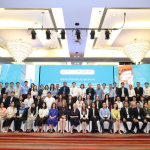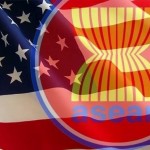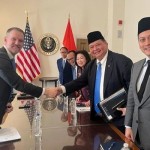Total number of posts 461.
The Regional Comprehensive Economic Partnership (RCEP) is becoming the largest existing free trade agreement in the world in terms of economies of scale.
With the aim of deepening the integration of Southeast Asian and Northeast Asian economies, the RCEP Agreement places high requirements on customs in terms of procedures, processes, and operational efficiency. Looking back at the early history of RCEP, in 2012, ASEAN invited China, Japan, South Korea, Australia, and New Zealand to build a multilateral free trade agreement. The RCEP Agreement was signed in November 2020 and has now come into force, creating the world's largest free trade area by gross domestic product, accounting for 30% of the world's population and accounting for 25 % of global trade in goods and services.
From a customs perspective, the RCEP agreement has a number of features to note as follows:
1. Regulations on the maximum time limit for the release of certain types of goods:
- Set the time limit for release of goods in Article 4.11: Release of goods and 4.15: Express shipment. An Annex was also added to the Agreement, setting a specific period of time for certain countries to implement certain provisions of the Agreement, including those under Articles 4.11 and 4.15.
- Members are encouraged to “measure the time it takes for their Customs authorities to release goods periodically and in a consistent manner, and publish those findings, using tools such as Guidelines for Measuring the Time Required for Release of Goods issued by the World Customs Organization to (a) evaluate the trade facilitation measures of the World Customs Organization; and (b) consider opportunities to further improve the time required for cargo release”.
2. Harmonized rules of origin and accumulation:
- Recognizing the regional nature, the Agreement's rules of origin provide a means of allowing materials to be pooled between the RCEP Parties during the production process (Article 3.4). Cumulative clauses allow manufacturers to source materials and production processes from RCEP parties and then include these materials and processes in the final determination of whether goods have origin or not.
- When RCEP is implemented, the ability to accumulate materials is limited to originating goods, but the Agreement provides that the RCEP parties can conduct a future review to consider extending the rule. aggregated, which allows inputs that do not meet the origin criteria to be counted as part of the qualifying value content for the goods produced and exchanged between all parties to the RCEP.
3. Requirements for customs procedures:
The requirements are listed under Chapter 4 and are higher than those contained in other free trade agreements. For example, the parties are required to (i) make advance rulings on classification, rules of origin, and customs value within a specified period of time as set out in the Agreement; (ii) do not exceed the period specified for the clearance of goods; (iii) provide operators who meet specific criteria (authorized operators) trade facilitation measures; (iv) adopt a risk management approach to customs control and post-clearance audits. Recognizing that the Parties have varying degrees of readiness to implement some commitments, particularly those beyond the WTO TFA, this Chapter allows them to do so in phases. Details of the implementation phase of the commitments are provided in the Appendix to the Chapter.
Conducting a clearance time study will not only allow Customs to measure their commitments when it is time to clear customs but also conduct a comprehensive assessment of the effectiveness and efficiency of customs procedures. border procedures, including those of other border and regulatory authorities. It will also allow administrative agencies to identify gaps and needs, and, if TRS is routinely implemented, to monitor and measure the results of the implementation of specific RCEP measures and policies. related books and programs.
TRS can be conducted at specific points of entry, and the methodology is tailored to focus on specific goods or procedures, such as couriers and perishables. RCEP Contracting Parties can explore the possibility of coordinating TRS at the regional level to get an overview of the average time required to move goods between the Parties and to identify the need in terms of reforming and building capacity.
The agreement was negotiated based on the 2012 edition of HS. With a new version of HS effective January 1, 2022, in countries that will implement HS 2022 from next year, goods will have to be classified twice - use HS 2022 edition for classification purposes and the 2012 edition for traceability - if the rules of origin in the RCEP are not updated. The RCEP rules of origin contain provisions regarding shipping requirements.
The agreement sets forth requirements for evidence to verify that no manipulation or alteration of existing documents, such as bills of lading or invoices, has taken place. But it is not limited to such documents, referring to "non-manipulating certificates or other relevant supporting documents, as customs may require". In practice, customs will need to provide some clarity and limit evidence requirements to existing documents.
Source: Công Thương News















